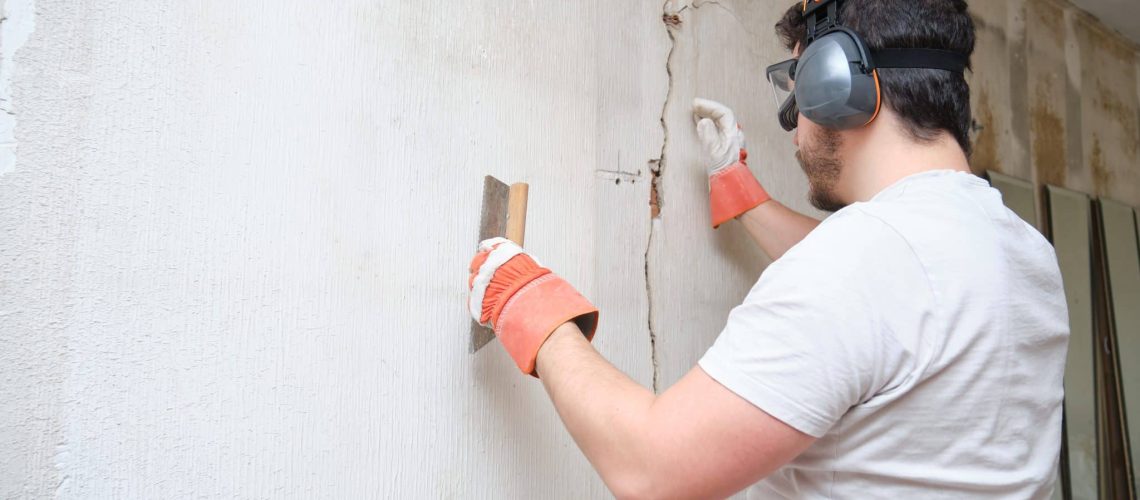When homeowners come across foundation issues, they are often stuck with a tough choice: should they opt for foundation repair or replace the entire foundation? Although both options can work, they come with varying expenses, schedules, and results. Let’s explore the differences between foundation repair and foundation replacement so you can make an informed decision.
Foundation Repair
Foundation repair involves addressing particular problems that are associated with your foundation, such as cracks, settling, or bowing walls. There are various techniques that can be used to tackle these issues..
- Piering and underpinning. This involves supporting the foundation by installing steel piers or concrete columns under the affected area.
- Slabjacking. This involves lifting and leveling a sunken slab by pumping a mixture of cement and other materials beneath it.
- Crack repair. This involves sealing cracks in the foundation to prevent water infiltration and further damage.
Foundation repair offers several advantages over foundation replacement. It’s a cost-effective and less invasive option that can be completed in a short period of time, usually a few days. However, it’s important to note that it may not always provide a long-term solution. If the root cause of the foundation issue is not addressed, the problem can resurface later.
Foundation Replacement
This involves tearing down the existing foundation and building a new one from scratch. This is usually necessary when the foundation is severely damaged or compromised and can’t be repaired. The process involves:
- Excavating. This process is typically undertaken when the existing foundation has deteriorated to the point where it can no longer support the weight of the building or when the building is being renovated or expanded. The excavation process involves carefully removing the soil and debris around the existing foundation and exposing the foundation for inspection and assessment. The new foundation is then constructed and carefully installed in place of the old one.
- Building the new foundation. Building a new foundation is a common method of foundation replacement when the existing foundation is too damaged to support the weight of a building or no longer meets modern building codes. The process involves excavating around the existing foundation to expose the footings and remove the old foundation. Once the old foundation is removed, the excavation is deepened, and the soil is compacted to provide a stable base for the new foundation. Reinforcing steel is then placed in the excavation, and concrete is poured to create the new foundation.
- Rebuilding. This involves rebuilding parts of the house that were removed during the excavation process, such as flooring, walls, or plumbing. This process involves completely removing the existing building, including the foundation, and constructing a new building in its place.
The benefits of foundation replacement are that it’s a permanent solution and can increase the value of your home. However, it’s also a much more invasive and expensive process than foundation repair. It can take several weeks or even months to complete, depending on the size of your home and the project’s complexity.
How to Decide Which Option is Right for You
The decision to repair or replace your foundation depends on several factors, including:
- The Severity of the Problem. If the problem is minor, such as a small crack, then repair may be sufficient. However, if the foundation is severely damaged or compromised, then replacement may be necessary.
- The Age of Your Home. Repair may be a good option if your home is relatively new. However, replacement may be the better choice if your home is older and has a history of foundation problems.
- Budget. Foundation repair is typically less expensive than replacement, but it may not be enough to address the underlying problem. If you have the budget, replacement may be the better long-term investment.
- Timeline. Repair may be the better option if you need to fix the problem quickly. However, if you have the time to invest in a more long-term solution, then replacement may be worth considering.
When it comes to deciding whether to repair or replace your foundation, it’s best to seek the advice of a professional foundation contractor. They have the expertise to assess your home’s condition and provide you with the most suitable and cost-effective solution.
Conclusion
Foundation problems can be addressed through two options – repair and replacement. Repairing is a cost-effective and less intrusive option, while a replacement is a permanent solution that can add value to your home. Whether to repair or replace your foundation depends on various factors such as the extent of the issue, age of your property, budget, and timeline. It is best to seek advice from a professional foundation contractor to decide on the ideal solution for your requirements.


